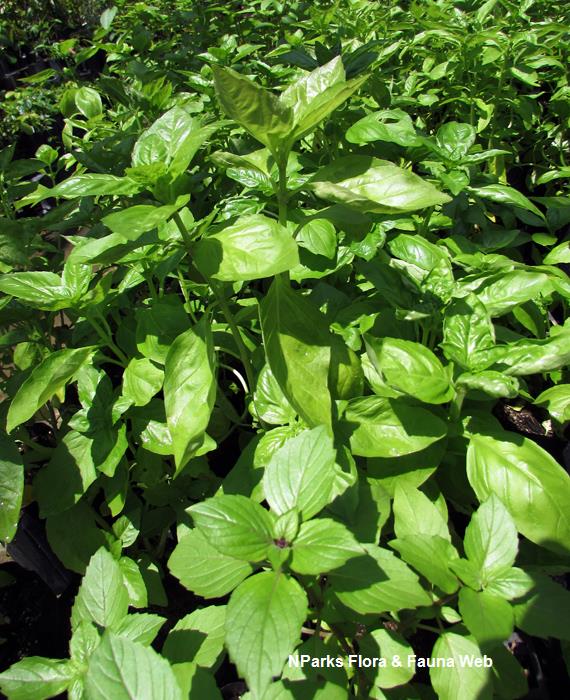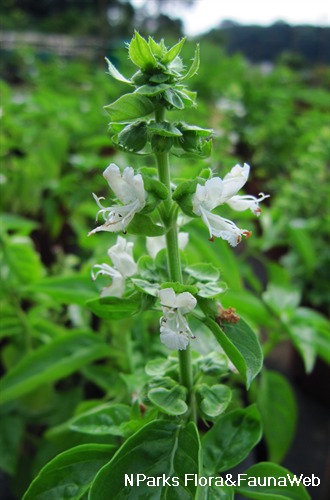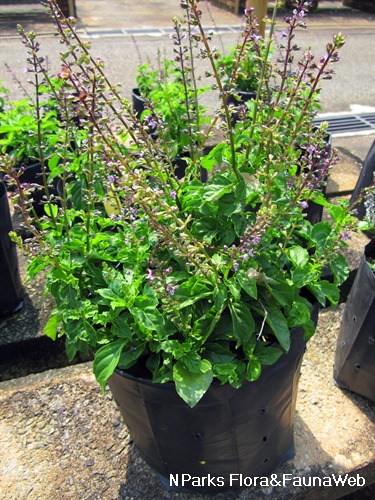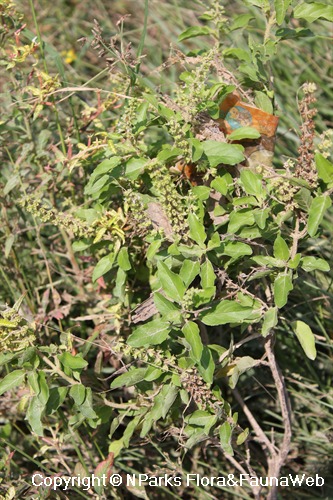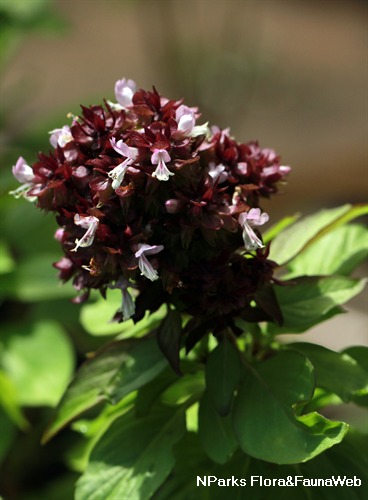
Name
Classifications and Characteristics
| Plant Division | Angiosperms (Flowering Seed Plants) (Dicotyledon) |
|---|---|
| Plant Growth Form | Herbaceous Plant |
| Lifespan (in Singapore) | Semi-Annual / Annual-Like |
| Mode of Nutrition | Autotrophic |
| Maximum Height | 0.5 m to 0.6 m |
| Maximum Plant Spread / Crown Width | 0.3 m |
Description and Ethnobotany
| Growth Form | Annual or short-lived perennial with erect growth habit. |
|---|---|
| Foliage | Leaves are elliptic and elongated, narrowing at the apex to a long tip. Leaf margin is sparsely lined with minute teeth. |
| Stems | The stem is dark purple. |
| Flowers | Pinkish purple, 2-lipped flowers are arranged in dense, round clusters. |
| Cultivation | Pinch the stem tips and remove flowers to promote leafy growth and longer plant lifespan. However, the flowers are ornamental and attracts bees. |
| Ethnobotanical Uses | Edible Plant Parts : Edible Leaves Food (Herb or Spice): The leaves have a liquorice flavour which is ideal for salads, sauces and Thai cuisine. |
Landscaping Features
| Landscape Uses | Container Planting |
|---|---|
| Thematic Landscaping | Fragrant / Aromatherapy Garden, Economic Garden |
Fauna, Pollination and Dispersal
| Pollination Method(s) | Biotic (Fauna) (Insects (Bee)) |
|---|
Plant Care and Propagation
| Light Preference | Full Sun, Semi-Shade |
|---|---|
| Water Preference | Moderate Water |
| Rootzone Tolerance | Well-Drained Soils, Fertile Loamy Soils |
Floral (Angiosperm)
| Flower Colour(s) | Pink, Purple |
|---|---|
| Flower Grouping | Cluster / Inflorescence |
| Flower Location | Terminal |
| Flower Symmetry | Bilateral |
| Individual Flower Shape | Tubular, Labiate / Lipped |
Fruit, Seed and Spore
| Fruit Classification | Simple Fruit |
|---|---|
| Fruit Type | Indehiscent Dry Fruit , Nut / Nutlet |
Image Repository
Others
| Master ID | 32217 |
|---|---|
| Species ID | 6623 |
| Flora Disclaimer | The information in this website has been compiled from reliable sources, such as reference works on medicinal plants. It is not a substitute for medical advice or treatment and NParks does not purport to provide any medical advice. Readers should always consult his/her physician before using or consuming a plant for medicinal purposes. |

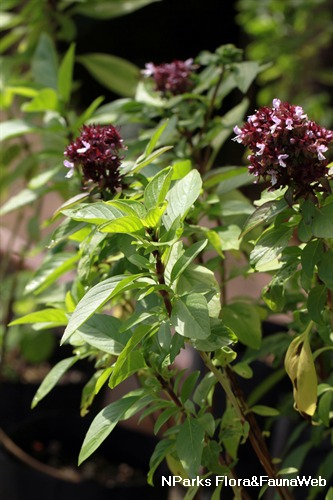
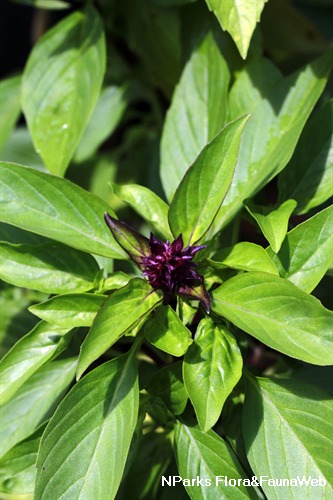
.jpg)
.jpg)
